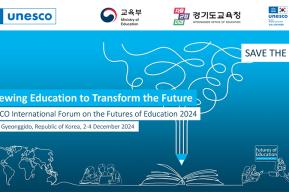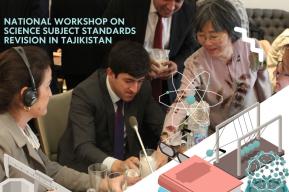Article
Czech Republic: The Strategy of Lifelong Learning in the Czech Republic, issued in 2007

Rationale of the strategy
The Strategy of Lifelong Learning (SLL) in the Czech Republic is a fundamental document for other cross-sectional and individual concepts and policies in this area and constitutes a comprehensive concept for lifelong learning. Its intention is to gradually establish achievable targets that can be promoted, among other things, by resources from European funds in the 2007–2013 programming period. However, implementation procedures are not specified, as these must follow from a consensus among the participating parties in public policy. The vision for lifelong learning emphasizes support for personal development, social cohesion, active citizenship and employability.
Concept of lifelong learning
Lifelong learning constitutes a basic conceptual change in the approach to education and its organizational principles. It sees all the potential for learning as a single interconnected unit that facilitates diverse transitions between education and employment. It allows learners to obtain qualifications and skills in various ways and at any time during their lives. The formal education system forms the essential basis, but constitutes only one part of lifelong learning. Lifelong learning assumes that formal, non-formal and informal learning complement each other. As the term ‘lifelong’ emphasizes only the temporal dimension of education, the term ‘lifewide’ learning has been coined recently to emphasize the fact that learning occurs in all environments and life situations.
Main challenges
- Low percentage of the population has completed higher education
- Low level of qualifications among the older population
- Low number of households with up-to-date information and communication technologies
- Regional differences in the population’s level of education
- Low educational mobility (i.e. children tend not to achieve a higher level of education than their parents)
- Low participation of social partners in development of lifelong learning
- Lack of a comprehensive system for identifying educational needs and of an accessible, individualized system of guidance and information services
- Education is based on early selectivity and there is limited permeability between different forms of education
- Low level of cooperation between higher education institutions, insufficient relevance to practice and limited cooperation with employers
- Continuing inequality in access to higher education; low interest in technical subjects
- Systemic and financial barriers to further education
- Low participation of adults in all forms of further education
Main targets and measures
The strategy refers to all educational sectors, including preschool, primary and secondary education, vocational education, higher education, and further education. The following measures are proposed:
- Initial general and vocational education: Promoting curriculum reform with an emphasis on increasing the functional literacy of students; reducing inequality in access to education; developing extra-curricular and recreational activities for students; promoting permeability and transferability between the educational programmes of secondary and higher education institutions; strengthening these programmes’ connection to further education; supporting graduates’ transition to the working world
- Higher education: Supporting the development of high-quality and effective forms of education; removing barriers to technical and higher education; improving the quality of higher education institution; recognizing previously achieved education; promoting cooperation between higher education institutions; enhancing the capacity of higher education institutions to educate working adults
- Further education: Encouraging individuals and employers to participate in further education; increasing investment in further education; securing systemic financial support for further education; harmonizing educational opportunities with the requirements of the labour market; developing opportunities for further education tailored to learners’ needs; increasing employees’ level of education; developing an information and guidance system for the users of further education
Particular feature of the strategy
The strategy pays attention to the interconnection of the strategic directions of lifelong learning and the priority axes of two operational programmes in the Czech Republic:
- The Education for Competitiveness Operational Programme promotes lifelong education in the 2007–2013 period. It defines the orientation and depth of intervention in the development of human resources through education in all its diverse forms. Its emphasis is on creating a complex system of lifelong learning that fosters a suitable environment for research, development and innovation and stimulates cooperation between educational institutions and industry. The programme is divided into four priority axes: initial education; higher education; research and development; and further education.
- The Human Resources and Employment Operational Programme (HREOP) promotes further education in order to boost employment and provide employees with professional qualifications. The priority axes of HREOP are: enhancing the adaptability of employees and employers; creating an active employment policy; improving attitudes towards work; permanently incorporating job seekers; and preventing unemployment. It is also concerned with developing education in public administration, public services and international cooperation. The programme's objective is implemented through five priority axes: adaptability; active policy on the labour market; social integration and equal opportunities; public administration and public services; and international cooperation.
Relevant documents that the strategy refers to
- European Ministers of Education. 1999. The Bologna Declaration of 19 June 1999: Joint declaration of the European Ministers of Education
- Council of the European Union. 2000. Lisbon Strategy
- Czech Republic. Ministry of Regional Development. 2000. Regional Development Strategy of the Czech Republic
- Commission of the European Communities. 2000. Memorandum for Lifelong Learning
- Commission of the European Communities. 2001. Making a European Area of Lifelong Learning a Reality
- Czech Republic. Ministry of Education, Youth and Sport. 2001. National Programme for the Development of Education in the Czech Republic
- Czech Republic. Ministry of Education. 2001. National Policy of Research and Development for 2004 – 2009
- Czech Republic. Ministry of the Environment. 2001. State Environmental Policy
- European Ministers of Education. 2001. Prague communiqué
- European Commission. 2002. Declaration of the European Ministers of Vocational Education and Training, and the European Commission, convened in Copenhagen on 29 and 30 November 2002: The Copenhagen Declaration
- European Union. 2004. Maastricht Communiqué on the Future Priorities of Enhanced European Cooperation in Vocational Education and Training (VET)
- Ministry of Industry and Trade of the Czech Republic. 2004. National Innovation Strategy
- Czech Republic. 2005. National Lisbon Program 2005 – 2008: National reform programme of the Czech Republic
- Czech Republic. 2005. Economic Growth Strategy of the Czech Republic
- Czech Republic. 2005. National Innovation Policy of the Czech Republic for 2005 – 2010
- Czech Republic. 2005. Sustainable Development in the Czech Republic
- European Communities. 2005. Integrated Guidelines for Growth and Jobs, 2005 – 2008
- European Commission. 2005. Modernizing education and training: a vital contribution to prosperity and social cohesion in Europe (Memo 05/415)
- Czech Republic. Ministry of Education. 2006. Country Background Report for Czech Republic (OECD thematic review of tertiary education)
- European Commission. 2006. Education and Training 2010
- Czech Republic. Ministry of Regional Development. 2007. National Strategic Reference Framework of the Czech Republic, 2007-2013
- Czech Republic. 2007. Convergence Program of Czech Republic for 2005-2008
- Council of the European Union. 2008. Council Resolution on Better Integrating Lifelong Guidance into Lifelong Learning Strategies
Stakeholders involved in the development of the strategy
- Ministry of Education, Youth and Sports
- National Institute of Technical and Vocational Education
Stakeholders responsible for implementation of the strategy
Further readings and web links
Issuing body
Ministry of Education, Youth and Sports










